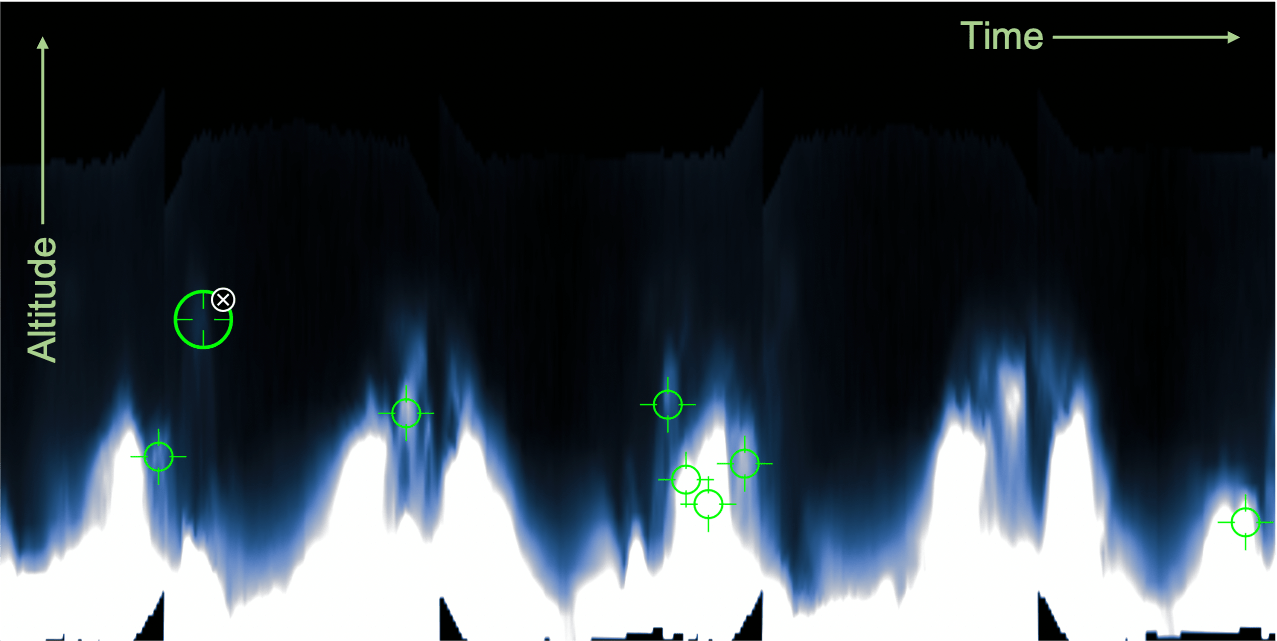Cloudspotting on Mars
Clouds are both drivers and products of a planet’s climate. How does this work on Mars? Join us as we unlock the secrets of the red planet’s atmosphere, which is so different from Earth’s.
project tasks
Examining data
Division
Solar System
where
Online
launched
2022
What you’ll do
- Learn to recognize the telltale pattern of clouds in graphed data collected by the Mars Climate Sounder on the Mars Reconnaissance Orbiter.
- Look for and mark any cloud signatures you see in data graphs.
- Contribute to the fundamental understanding of Martian clouds.
Requirements
- Time: ~15 Minutes to complete online training.
- Equipment: Internet connected mobile device or computer
- Knowledge: None. In-project training provided.
Get started!
- Visit our project website.
- Click the “Get started” button and complete the short Tutorial to learn how to identify Martian clouds in data.
- Start identifying clouds on Mars in data collected by the Mars Climate Sounder.
- Connect with other project participants and scientists in the project’s Talk forum.
Learn More
Join the Zooniverse Talk forums to learn from peers and scientists, or join our email list to be invited to semi-regular video calls with the project science team. You can access a playlist of recordings of previous project webinars here.
Want to learn the basics about Mars?
- Start here if you like to read or here if you prefer videos.
- Then "visit" Mars in virtual reality with Access Mars, thanks to NASA Jet Propulsion Lab and Google.
- Explore Mars with NASA's Mars Exploration Program.
- Do a deep dive on clouds in the middle atmosphere of Mars.
- Find out the latest news on the Mars Reconnaissance Orbiter on the mission website.
Get to know the Cloudspotting on Mars science team!



































